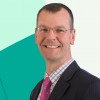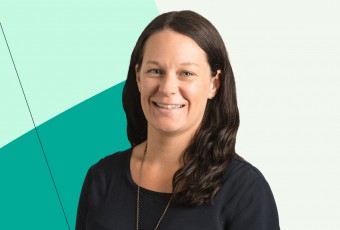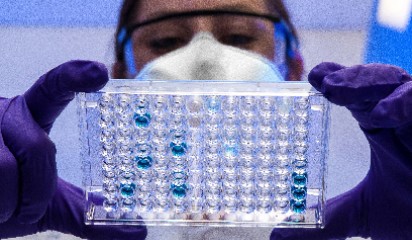The Intellectual Property Office of New Zealand (IPONZ) has recently updated The Patent Examination Manual section regarding ’Regulation 82: Claims overlap between parent & divisional applications‘ in response to some recent decisions following hearings before an Assistant Commissioner.
Regulation 82 of the Patents Regulations 2014, which relates to overlap of claims between parent and divisional applications, states:
if the Commissioner has accepted the complete specification relating to a parent application, that the divisional application must not include a claim or claims for substantially the same matter as accepted in the parent application
and conversely
if the Commissioner has accepted the complete specification relating to a divisional application, that the parent application must not include a claim or claims for substantially the same matter as accepted in the divisional application.
Examination reports in New Zealand will often contain an informal warning that an objection may be raised if either the parent or divisional application are accepted, if both the parent and divisional are pending and the examiner considers the subject matter of the claims of each application overlap.
Ganymed Pharmaceuticals GmbH
Regulations 52 (which relates to divisional applications generally) and 82 were amended on 5 April 2018 to clarify that overlapping subject matter is assessed on acceptance and not on filing. Ganymed1 clarified that regulation 82 only applies to applications submitted after 5 April 2018.
The Patent Examination Manual has been updated to note that Ganymed held that a regulation 82 objection can be overcome by:
- argument
- amendment of the pending application
- amendment of the accepted application or granted patent
- withdrawal of the accepted application, or surrender of the granted patent.
Oracle International Corporation
Oracle2 considered the application of regulation 82, and specifically the phrase ’must not include a claim or claims for substantially the same matter’.
Firstly, The Patent Examination Manual concludes that the phrase ‘must not’ means the Commissioner has no discretion to allow overlapping claims in a parent and divisional application.
Regarding ’substantially the same matter‘, the Assistant Commissioner in Oracle stated
If the claims, construed as they would be understood by a person skilled in the art, are such that an infringement of the first is an infringement of the second and an infringement of the second is an infringement of the first, then this is necessary and sufficient for the Commissioner to conclude that the first and second claims have the same scope.
This approach differs from an earlier New Zealand Intellectual Property Office (IPONZ) decision that indicated only ’complementary‘ claims, i.e. claims that are broader in one aspect but narrower in a second aspect, are generally allowable.
The Patent Examination Manual references Oracle and explains:
From Oracle, paragraph 9, “‘substantially the same’ means ‘essentially the same’, ‘the same but for minor unimportant details’, and/or ‘not substantially different’”. Having regard to the plain meaning of the words, the claims of the respective applications must be ‘for substantially the same matter' to trigger regulation 82. It is not enough that the respective claims have some overlap. They must overlap to a significant extent to be for substantially the same matter such that they could invoke the public interest concerns described in Dreyfus.
The public interest concerns described in Dreyfus3 were provided as a justification for not permitting an applicant to claim the same matter in multiple applications:
…The Patents Acts do not appear to contemplate and provide for a situation such as has arisen in this case and I infer from the absence of provisions that it was not intended to allow one man to have two grants for the same invention. Why should he? If two, why not three? The result would be to cause confusion in matters which ought to be as clear as possible. A patent confers a monopoly. There is no sense in saying twice over that a man is to have a monopoly in respect of one and the same invention. I am of the same opinion as the Assistant Comptroller, that to do so would lead to considerable public inconvenience and possibly to public damage.
The Patent Examination Manual continues to indicate that ‘complementary’ claims are allowable, referring to IPONZ hearings decisions under regulation 23(2) of the Patents Regulations 1954 (which were considered in that earlier IPONZ decision). Those regulations continue to apply during examination of applications proceedings under the Patents Act 1953.
Other partial claim overlap that The Patent Examination Manual confirms is allowable includes:
- a parent claiming a Markush-type genus such as ‘A compound of formula (I)’ (encompassing hundreds of thousands of compounds within its scope), and a divisional claiming a few specific compounds within the genus
- a small but not trivial, irrelevant or inconsequential differences that render the claims substantially different
- a claim to invention A in the parent and invention B in the divisional, and a claim to A+B in either the parent or divisional where A and B are separate inventions.
1 = Ganymed Pharmaceuticals GmbH and TRON-Translationale Onkologie an der Universitätsmedizin der Johannes Gutenberg-Universität Mainz Gemeinnützige GmbH [2021] NZIPOPAT 6
2 = Oracle International Corporation [SU1] [SU2] [2021] NZIPOPAT 5
3 = Dreyfus’ Application (1927) 44 RPC 291








